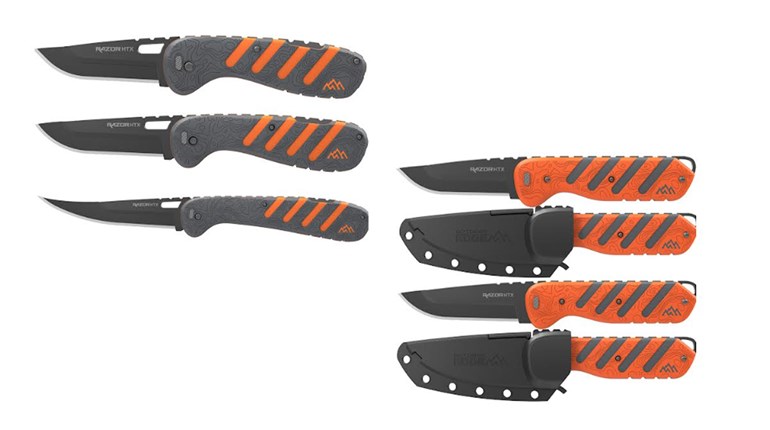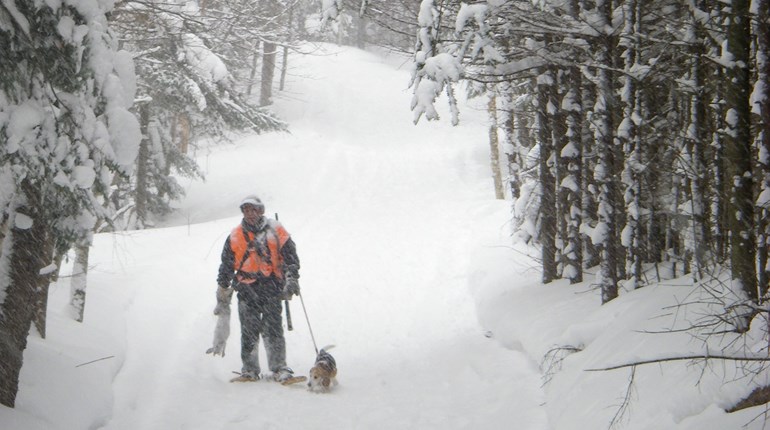
Other than a gun or bow, a knife is perhaps the most important tool a hunter can have. But it’s only useful when it is sharp, and learning how to sharpen a knife is one of the most important skills any hunter can acquire.
The only proper way to sharpen a knife blade is by the skillful and correct application of abrasives that will shape and hone the edge to perfection.

The first step is to decide on the angle desired for your blade edge. The most common angles for hunting and outdoor knives are 20 degrees and 25 degrees. I use 20 degrees for all my general-use hunting knives, fillet knives and meat processing knives—my primary knives for dealing with game or fish. The main use for my belt knife is to field-dress game, so I again choose the 20-degree angle with that in mind. For a bushcraft or heavy-duty outdoor knife, 25 degrees will provide a stronger edge for doing camp chores like splitting wood, creating fuzz sticks for the fire or whittling a tent peg. Obviously, both types of knives and both angles will cross over in usefulness when needed. A bushcraft knife will easily gut a deer, and my custom Damascus blade hunting knife can fuzz the hell out of a stick.
 Work Sharp has taken the guesswork out of knife sharpening by providing built-in angle guides on all of its knife- and tool-sharpening systems.
Work Sharp has taken the guesswork out of knife sharpening by providing built-in angle guides on all of its knife- and tool-sharpening systems.
You need a way to maintain your chosen angle throughout the sharpening process. With a good eye, a steady hand and some experience, you can sharpen a knife on a traditional flat bench stone, but it’s a difficult skill to master and even those good at it will tell you it’s tedious. We have much better options today.
It’s far better to choose a sharpening system that will hold the blade at the correct angle while you sharpen the edge. I have tried almost all of them, but lately I have been using the new Work Sharp Manual Precision Adjust Knife Sharpener and I like it a lot. It has a wide range of adjustment for angle and includes three stones in one pivoting holder. The upgrade adds a nice case and a lot more stones. With this tool, I can sharpen a knife to a shaving edge in just a few minutes. At $59.95 MSRP it’s priced below most competition.

While a bit a more expensive, electric belt sharpeners like the Work Sharp Knife and Tool Sharpener are another good choice. They have a guide that helps maintain the angle and offer varying belt grits to hone an edge. If you are a knife nerd and expect to sharpen multiple blades, this power sharpener is a very good choice. Be advised though, there is a learning curve. Practice with cheap knives.
It’s helpful to color the blade edge with a felt tipped marker. This gives you a better visual of where the stone or belt is contacting and if you have chosen the correct angle. A little acetone will remove the marker when you are done.

Once you pick your angle and your sharpening tool, it’s time to re-cut the edge. This important step is often overlooked, or done wrong. Have you ever watched somebody try to sharpen a knife using different grit stones who just can’t seem to create a sharp edge? This is why. They are not working the edge of the blade, but rather are grinding away somewhere back on the bevel. You must recut the bevel until it reaches all the way to the edge before switching to any finer stones.
Use the coarsest stone or belt you have for this process. Apply some pressure when working, and when the stone or belt reaches the edge it will roll over a burr that you can feel with your finger on the opposite side of the blade. Once you have this burr over the entire length of the blade edge, you have that side’s angle recut properly. Flip the knife and repeat on the other side of the blade. This can happen fast with an aggressive stone or with a belt grinding system, so be careful. You don’t want to remove any more metal than necessary.

If you maintain your angle, you can now progress through different stone and belt grits knowing that you are working on the edge of the blade. Switch to a medium grit and carefully work both sides of the knife until you see the bevel on the edge, the working surface, is polished out. Make your final few passes lightly with little pressure. Switch to a finer grit and repeat. Finish with the finest stone or polishing belt you have. I like a hard Arkansas stone, or the ceramic equivalent. Work the edge carefully and finish with a very light touch. Remember you are honing a delicate edge of very thin metal, so go lightly at the finish.
One finishing trick, if you have an adjustable angle guide like on some Work Sharp models, is to increase the angle a few degrees and finish by very lightly polishing the edge with a very smooth stone. The result can be amazing with an edge so sharp it can cut through time.

I have long checked how sharp a knife is by shaving the hair on my arm. If the hair pops off almost before the blade touches it, the knife is sharp. Of course in today’s world of liability and litigation I would never, ever recommend using this method. It’s just too dangerous. Try cutting paper. Glossy magazine paper is best.





































